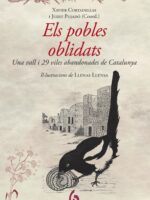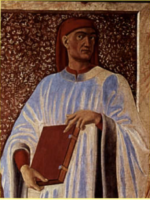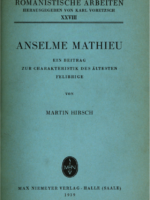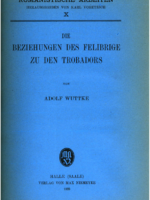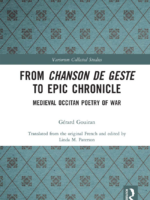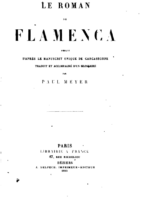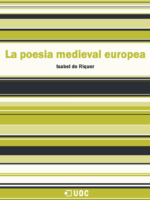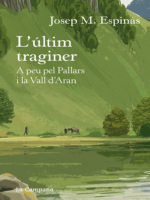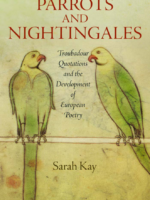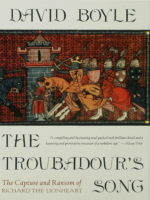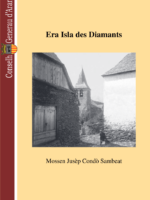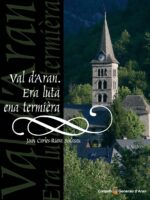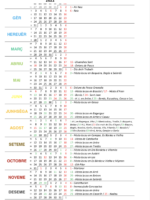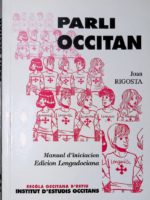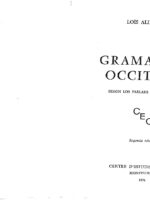Recommended Books
-
Els pobles oblidats
0,00 €L’any 2012 vam publicar Els pobles perduts amb la intenció de recuperar la memòria de 30 indrets deshabitats que formen part del nostre llegat col·lectiu. Ara hi tornem amb les històries d’una vall i de 29 viles.
Hem escrit Els pobles oblidats entre 19 autors d’arreu de Catalunya. Parlem de Vidabona i Saltor, Canals de Cerdanya, Cerneres, Solanell, Montant de Tost, Sant Romà de Tavernoles, Àrreu i Dorve, als Pirineus. Herba-savina, Orrit, Raons i Oroners, a Lleida. Sant Joan de Toran i la seva vall, a la Val d’Aran. Els Metges, Briolf i Sant Marçal de Quarantella, a Girona. Salselles, el Putxot, Santa Margarida de Cabagès, a la Catalunya Central. Sant Marçal del Montseny, Jafre i el carrer del Xipreret, de l’Hospitalet de Llobregat, a Barcelona. Montargull, la Bartra, Esblada, Fontscaldetes, Gallicant i Fatxes, a Tarragona. I lo Mas del Llaurador, al Matarranya.
Els pobles oblidats convida a conèixer el país i a caminar-hi. Obre la porta a la nostra història i a la història d’unes persones que van haver d’aprendre a viure lluny d’on van néixer.
Els textos relacionats amb l’Aran són en edició bilingüe català i aranès.
-
Lo Decameronet
0,00 €Lo seu títol es, de bon entendre, una guinhada de cap a la tradicion bocaciana. Per çò qu’es de l’“encastre” : un rodelet d’escrivans congressistas que sobrevivon un moment aclapats dels escombres d’un castel d’Urbino, enganan la mòrt en jogant sus Eròs e donan biais a sas fantaumas personalas. La “cort d’amor” del Bocaci ven aital una caunha, anticipacion del clôt ; mas se tracha totjorn d’una allegoria de la paraula creatritz que desfisa la mòrt.
La primiera persona de cadun dels charraires es lo mejan d’esconjurar la malemparada, en fondamentant sul lengatge la certitud d’una realitat multiforma. Dins la festa dels paraulisses, jos la fusta pintada que retarda lo desastre, s’entrenan istôria e mites, versemblanças e inversemblanças de l’escaquièr cultural europenc. Lo mistèri que plomba sus aqueles racontes, per la màger part “sens solucion”, nos convida sai que a formular d’ipotèsis recebablas de sobrevivença en delà de l’apocalipsi de la civilizacion planificada d’ara que sèm. Pr’amor d’aquô, la majoritat son de somiarias solaras en omenatge a l’aire liure e a la libertat del desir uman.
-
-
From Chanson de Geste to Epic Chronicle: Medieval Occitan Poetry of War
0,00 €In this collection of essays Gérard Gouiran, one of the world’s leading and much- loved scholars of medieval Occitan literature, examines this literature from a primarily historical perspective. Through texts offering hitherto unexplored insights into the history and culture of medieval Europe, he studies topics such as the representation of alterity through female figures and Saracens in opposition to the ideal of the Christian knight; the ways in which the narrating of history can become resistance and propaganda discourse in the clash between the Catholic Church and the French on the one hand and the Cathar heretics and the people of Occitania on the other; questions of intertextuality and intercultural relations; cultural representations fashioning the West in contact with the East; and Christian dissidence in the twelfth and thirteenth centuries. Written in an approachable style, the book will be of historical, literary and philological interest to scholars and students, as well as any reader curious about this hitherto little-known Occitan literature.
Gérard Gouiran was born in 1945 at Le Rove, which was then a small village close to Marseille. His parents often spoke Occitan between themselves but avoided doing so with their children for fear of damaging their education. It was only after studying classics in Marseille and then Paris that Professor Gouiran rediscovered the Occitan language, and from then on he has devoted himself to medieval literature. Best known for his magisterial edition of the troubadour Bertran de Born, he has written – and spoken – widely on troubadour lyric, epic and romance.
Linda M. Paterson taught at Northeastern University, Boston, USA, for two years before moving to the University of Warwick, UK, in 1971, where she is now Professor Emerita. Her books include Troubadours and Eloquence (1975); The World of the Troubadours: Medieval Occitan Society, c.1100–c.1250 (1993); Culture and Society in Medieval Occitania (2011); and Singing the Crusades: French and Occitan Lyric Responses to the Crusading Movement, 1137–1336 (2018).
-
La poesia medieval europea
0,00 €L’originalitat i la qualitat artística dels trobadors medievals han transcendit el seu temps. Forjada entre els segles XI i XIII, la seva poesia sobre temes universals com l’amor, el vituperi o el lament fúnebre, es llegeix avui amb el mateix delit que s’escoltava llavors. Aquest llibre ens acosta a alguns dels seus màxims exponents i ens delecta amb petites joies de la lírica trobadoresca.
-
L’últim traginer: A peu pel Pallars i la Vall d’Aran
0,00 €Espinàs converteix l’experiència de la caminada en una crònica viva en la qual el lector s’aventura amb l’escriptor per camins desconeguts del Pallars i la Vall d’Aran.
L’últim traginer ens transporta a un temps en què el Pallars i la Vall Aran no tenien estacions d’esquí, els guàrdies civils anaven amb bicicleta i la centraleta de telèfons de Salardú la feia funcionar, manualment, una noia en un racó de menjador d’una antiga fonda. El lector s’aventura amb l’escriptor pels camins i les valls d’aquestes contrades, en una crònica que reviu un món rural perdut i nostàlgic de mitjan anys cinquanta.
Josep M. Espinàs, a través d’aquesta crònica del 1956, reviu uns fets, uns personatges i un paisatge que avui ja formen part del passat, però que l’autor manté vius per sempre amb el seu testimoni de narració viva.
-
Parrots and nightingales : troubadour quotations and the development of Europea poetra
0,00 €The love songs of Occitan troubadours inspired a rich body of courtly lyric by poets working in neighboring languages. For Sarah Kay, these poets were nightingales, composing verse that is recognizable yet original. But troubadour poetry also circulated across Europe in a form that is less well known but was more transformative. Writers outside Occitania quoted troubadour songs word for word in their original language, then commented upon these excerpts as linguistic or poetic examples, as guides to conduct, and even as sources of theological insight. If troubadours and their poetic imitators were nightingales, these quotation artists were parrots, and their practices of excerption and repetition brought about changes in poetic subjectivity that would deeply affect the European canon.
The first sustained study of the medieval tradition of troubadour quotation, Parrots and Nightingales examines texts produced along the arc of the northern Mediterranean—from Catalonia through southern France to northern Italy—through the thirteenth century and the first half of the fourteenth. Featuring extensive appendices of over a thousand troubadour passages that have been quoted or anthologized, Parrots and Nightingales traces how quotations influenced the works of grammarians, short story writers, biographers, encyclopedists, and not least, other poets including Dante and Petrarch. Kay explores the instability and fluidity of medieval textuality, revealing how the art of quotation affected the transmission of knowledge and transformed perceptions of desire from the “courtly love” of the Middle Ages to the more learned formulations that emerged in the Renaissance. Parrots and Nightingales deftly restores the medieval tradition of lyric quotation to visibility, persuasively arguing for its originality and influence as a literary strategy.
-
The Troubadour’s Song: The Capture and Ransom of Richard the Lionheart
0,00 €Chronicles the events surrounding the capture and release of King Richard I during the twelfth-century Third Crusade, describing the ransom delivered by Eleanor of Aquitaine that represented one quarter of England’s wealth and the subsequent legend that evolved about the singing troubadour, Blondel. By the author of The Sum of Our Discontent.
-
Val d’Aran, era luta ena termièra
0,00 €Era luta ena termièra d’Aran qu’ei era istòria des sues guèrres, des sòns privilègis, des vicissituds d’uns abitants qu’aueren era clau deth pas entre es reiaumes de França e d’Espanha. Es fortaleses araneses sigueren eth complement necessari der emplaçament estrategic excepcionau d’Aran.
Er objectiu non ei cap eth de bastir ua istòria complèta dera Val d’Aran, senon mostrar es tribulòcis bellics qu’ath long dera sua istòria a patit era Val, damb mès o menys fortuna, e que tostemps an agut conseqüéncies ena vida sociau aranesa, e aguestes conseqüéncies a viatges se veiràn reflectides ena publicacion.

